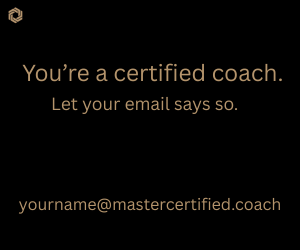There are many reasons for using coaching tools and exercises, including helping our clients grow, build confidence and save much needed time. Below are 10 specific ways to use coaching tools and exercises in your practice.
1. Give a Coaching Exercise as Homework and Keep Your Clients in a Coaching Frame of Mind between Sessions
Giving clients the option of a homework coaching exercise keeps clients in the coaching zone between sessions. Delve deeper into a topic you covered in session, or use it for a larger self-discovery agenda like identifying their values or completing a personal SWOT (strengths, weaknesses, opportunities, threats) exercise.
2. A Coaching Exercise Makes a Great Newsletter Sign-up Gift
What better way to encourage people to sign up for your newsletter list than to offer them a fun coaching exercise? Give it a jazzy title, and make sure it solves a problem or helps your target market achieve a goal. Choose a favorite tool—an exercise that highlights your expertise and offers your clients a taste of coaching with you. Who knows? They might get hooked!
3. Save Yourself Time and Effort. Be Sure You Don’t Forget Anything Important!
Create yourself forms and tools to save you time and ensure you remember the important things. What are your repeatable tasks? It could be a new client checklist that reminds you to “take payment” or a welcome letter template for new clients. Other great examples include a spreadsheet to record client hours, a client contact details form and your intake and wrap-up processes.
Set aside 30 minutes and create forms to reuse. List the important steps/items, give it a meaningful name and save it to a helpfully named folder so you can find it again. Tip: It doesn’t have to be perfect the first time; simply add/improve things as you think of them.
4. Use a Coaching Tool or Exercise to Lighten Up a Challenging Topic
Coaching unearths challenging topics for our clients, and sometimes this depth can be intimidating. A coaching exercise is a great way to lighten up heavy topics. Giving your client a worksheet lets them know others have the same issues and reassures them that there’s a process to be supported through.
For example, the Urgent Important Matrix can help a client see why they’re always stressed and in crisis mode. Other examples could include a handout of the grief process, drawing their inner critic and making a list of their deepest fears or relationship needs.
5. Include a Coaching Exercise in your Welcome Pack and make Coaching Tangible!
Coaching is often packaged so that clients pay hundreds of dollars up front for something they don’t fully understand and haven’t received yet. Including a coaching exercise in a Welcome Packet helps concretize the coaching, provides value right away and helps justify a client’s financial investment.
6. Increase Learning Retention with Coaching Exercises in Your Workshops
Worksheets and exercises are a fabulous way for clients to personalize workshop learnings—taking the information you share and applying it to themselves. In addition, coaching worksheets make a great takeaway from your workshop, hopefully containing your contact details so an attendee can follow up with you.
7. Use a Coaching Tool to Help a Client with a Specific Topic
Over time you’ll notice recurring coaching topics with your coachees. These are great areas to create a specific coaching exercise around. Create an informative handout or help them solve a specific problem with a coaching exercise. Some great examples of areas to create a specific tool around include time management, prioritizing, identifying stress triggers, goal setting and limiting beliefs.
8. Make a “Back of Room” Giveaway for your Networking Events, Conferences, etc.
At networking events, conferences and workshops, there is usually a table at the back of the room where people put brochures and business cards. This is a great place to put a coaching tool or exercise. Choose an exercise that is simple and visually appealing, and watch as people take them home, with your branding and contact details as well! Tip: The Wheel of Life is a pretty universal and appealing tool.
9. Create a Coaching Tool to Sell on your Website
As your experience grows, you’ll become clear on the common issues your clients face. This is when you create a meatier product to help your clients deal with that issue. Not only is there the potential for additional income, but selling a specific coaching tool also positions you as an expert in your field.
10. Finally, I recommend you use coaching forms and exercises to grow yourself!
Anything you create for others can be trialed first by you. It’s a great way to check quality—and you’ll learn about yourself along the way too.
So, there you have 10 great ways to use coaching exercises and worksheets in your practice. I hope you feel inspired to get out there and start using or creating your own coaching worksheets and exercises!
Disclaimer
The views and opinions expressed in guest posts featured on this blog are those of the author and do not necessarily reflect the opinions and views of the International Coach Federation (ICF). The publication of a guest post on the ICF Blog does not equate to an ICF endorsement or guarantee of the products or services provided by the author.
Additionally, for the purpose of full disclosure and as a disclaimer of liability, this content was possibly generated using the assistance of an AI program. Its contents, either in whole or in part, have been reviewed and revised by a human. Nevertheless, the reader/user is responsible for verifying the information presented and should not rely upon this article or post as providing any specific professional advice or counsel. Its contents are provided “as is,” and ICF makes no representations or warranties as to its accuracy or completeness and to the fullest extent permitted by applicable law specifically disclaims any and all liability for any damages or injuries resulting from use of or reliance thereupon.
Authors
Post Type
Blog
Audience Type
Coach Educators, Experienced Coaches, External Coaches, ICF Chapter Leaders, Internal Coaches, New Coaches, Professional Coaches, Team and Group Coaches
Topic
Coaching Toolbox, Discover - Your Coaching Career
Related Posts
How Psychology and Supervision Evolve Coaching
As the coaching profession continues to grow and mature, one question is…
How Conscientious Inclusion Can Improve Your Coaching
Coaching continues to evolve as the world becomes more interconnected, multicultural, and…
The Coaching Trap: When Empathy Becomes Exhaustion
Prepare yourself for the fact that this will not be about you…








